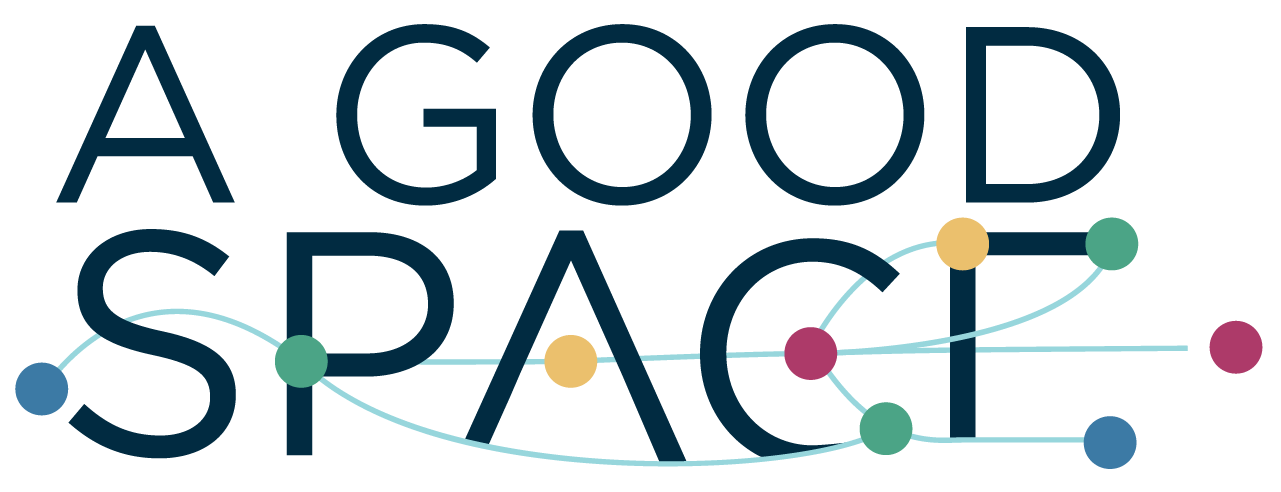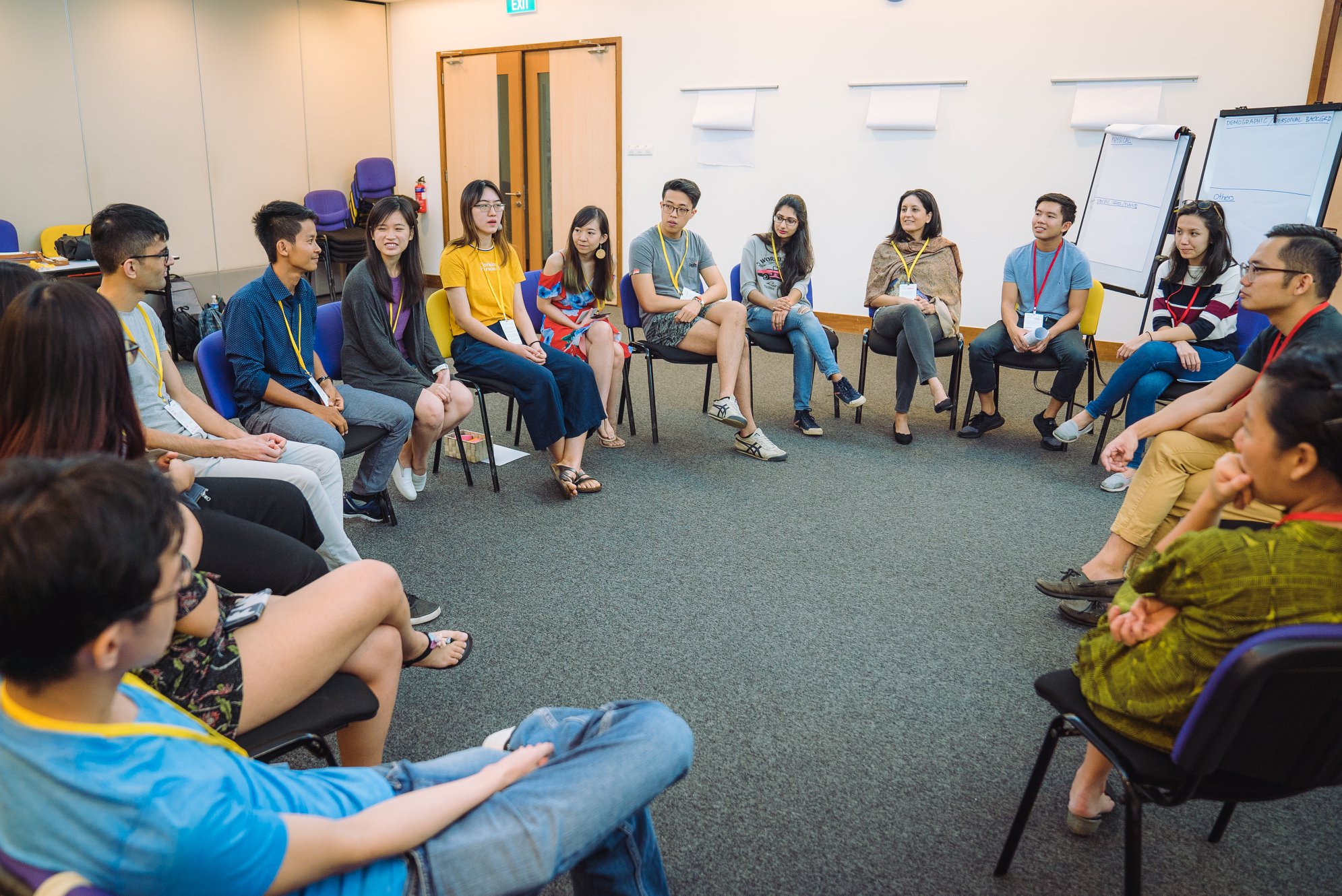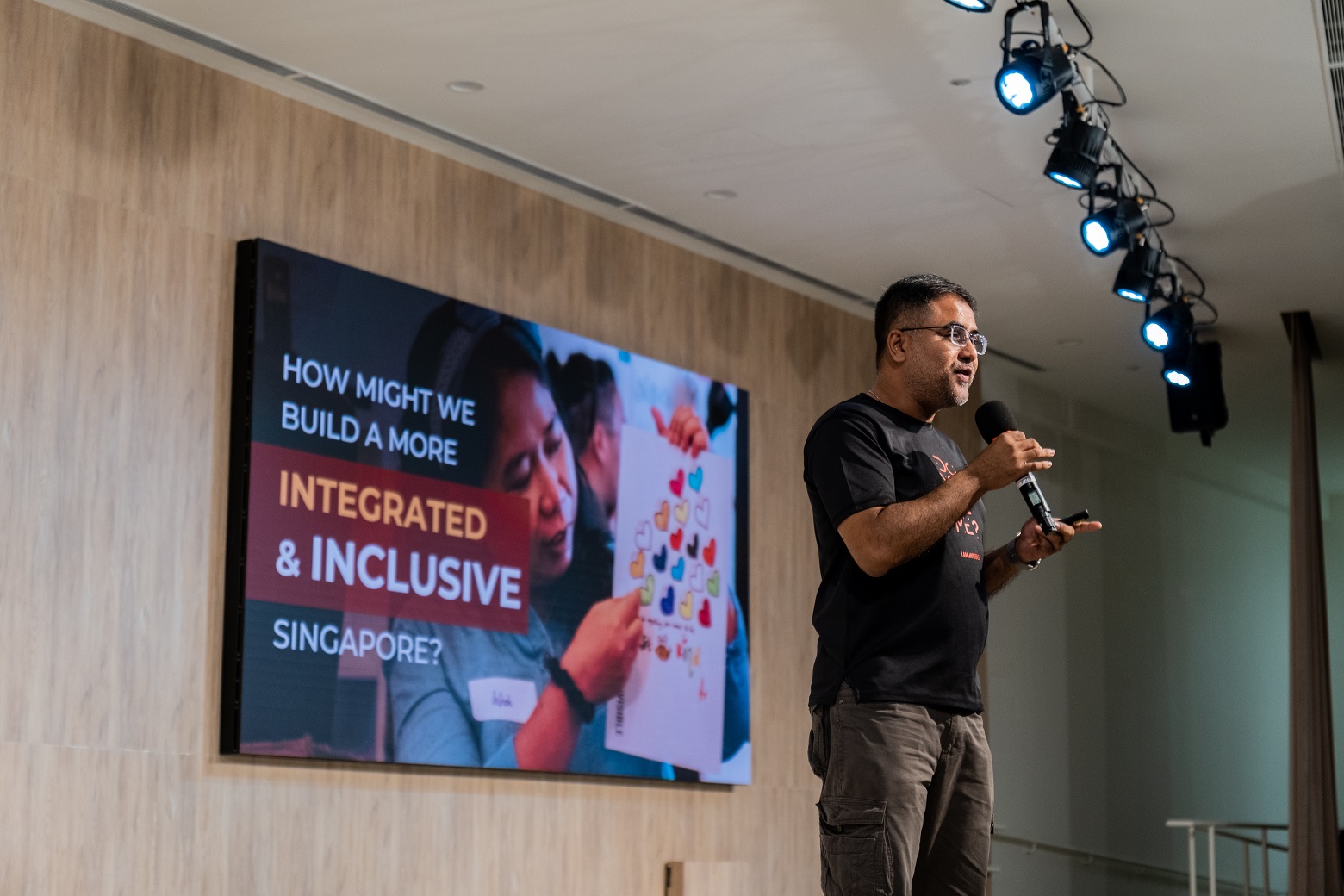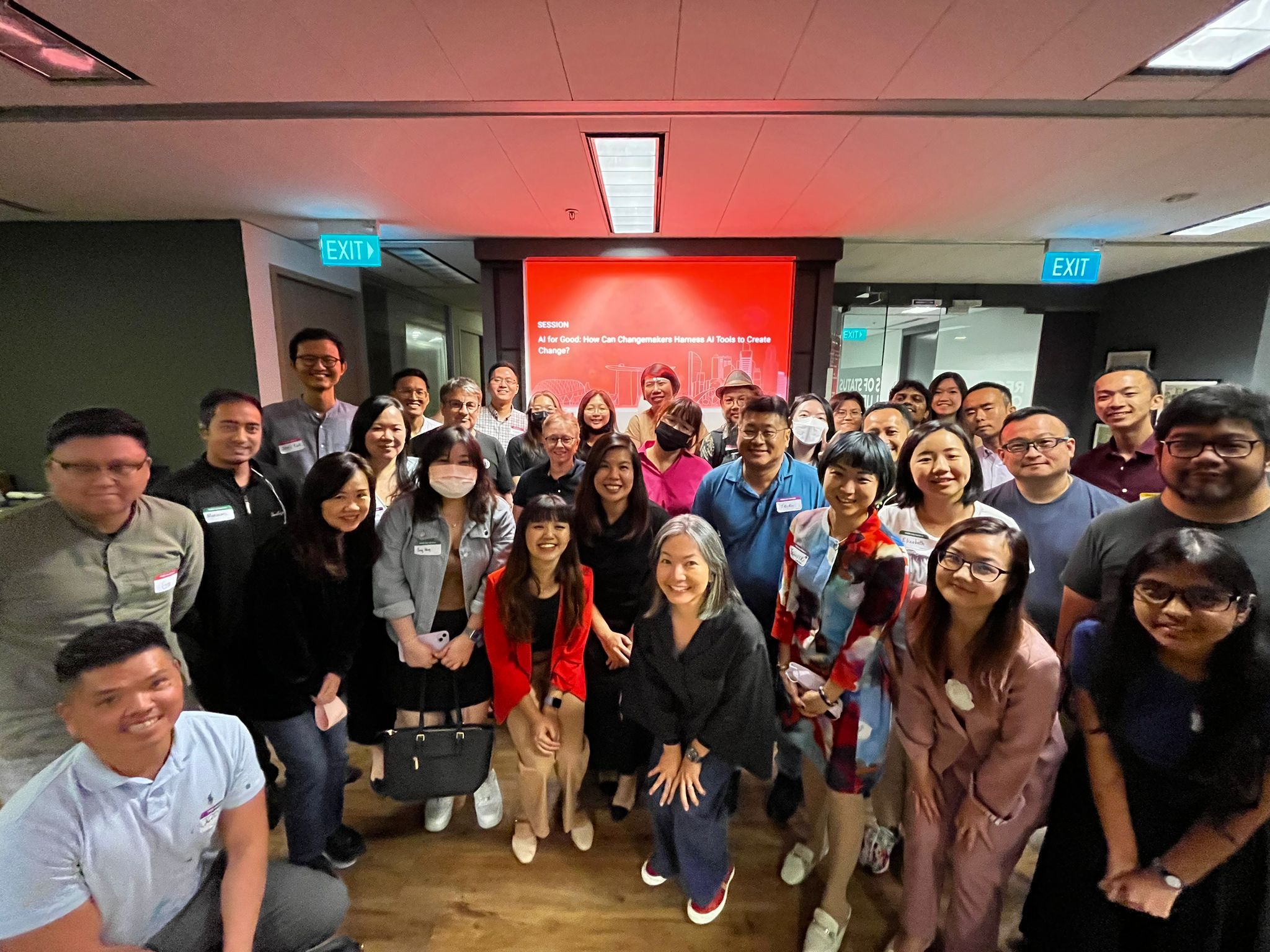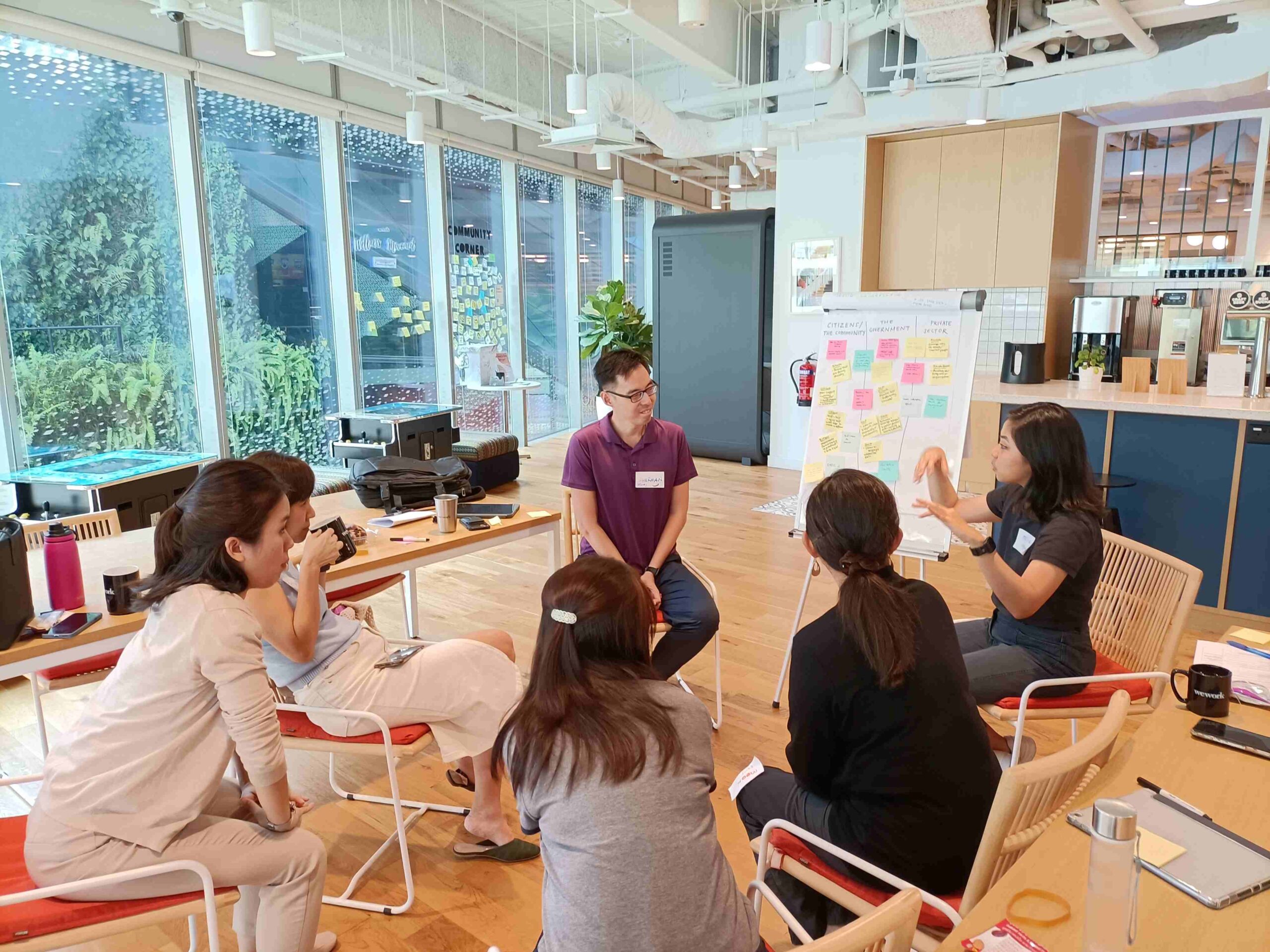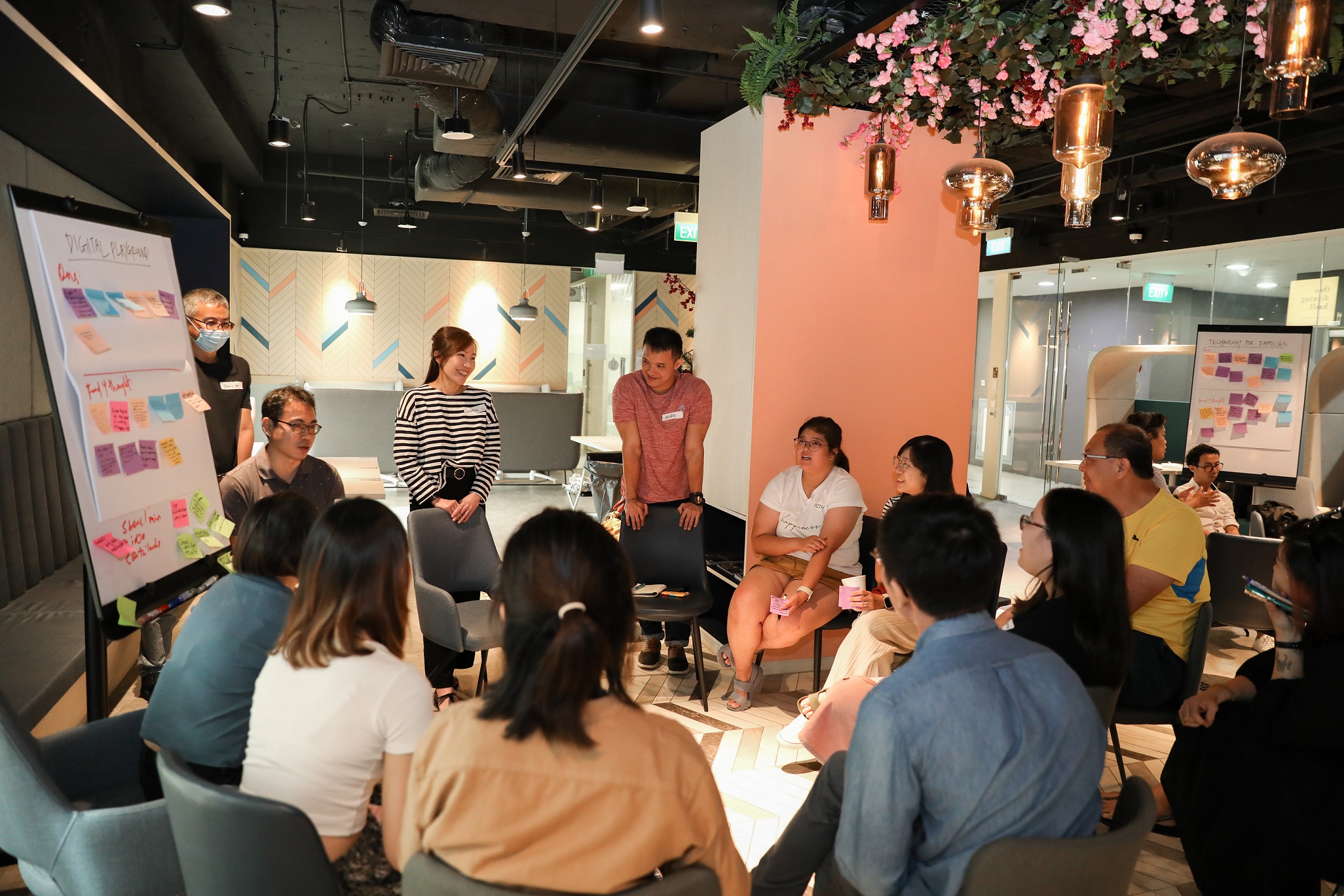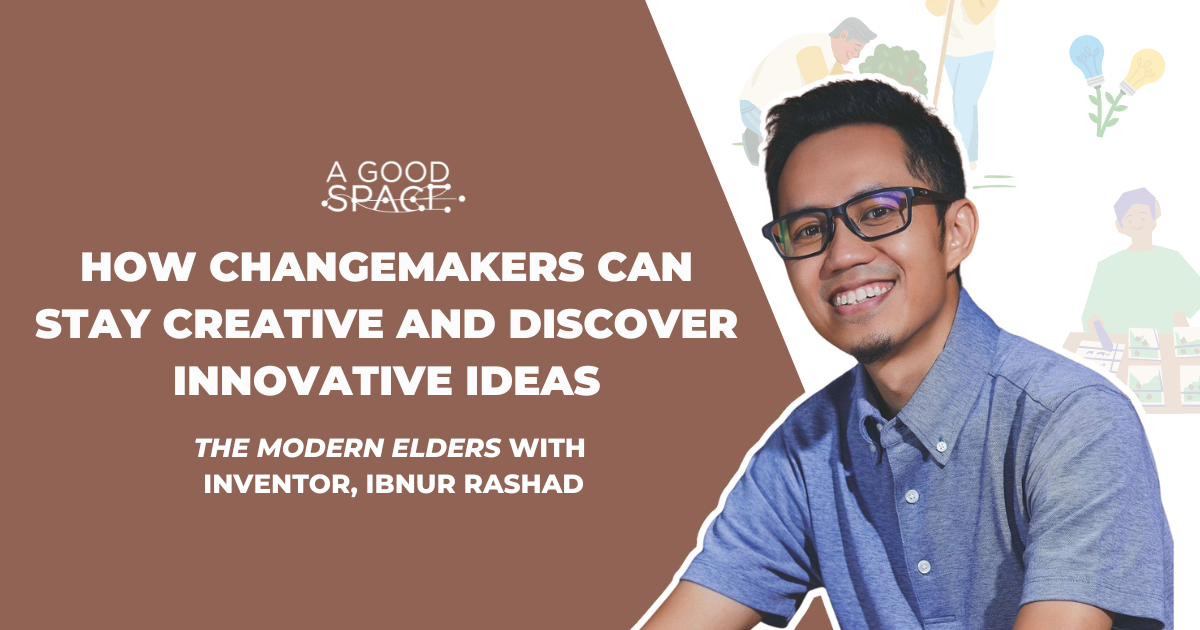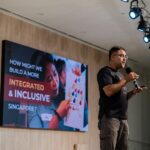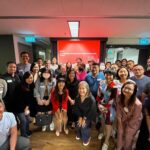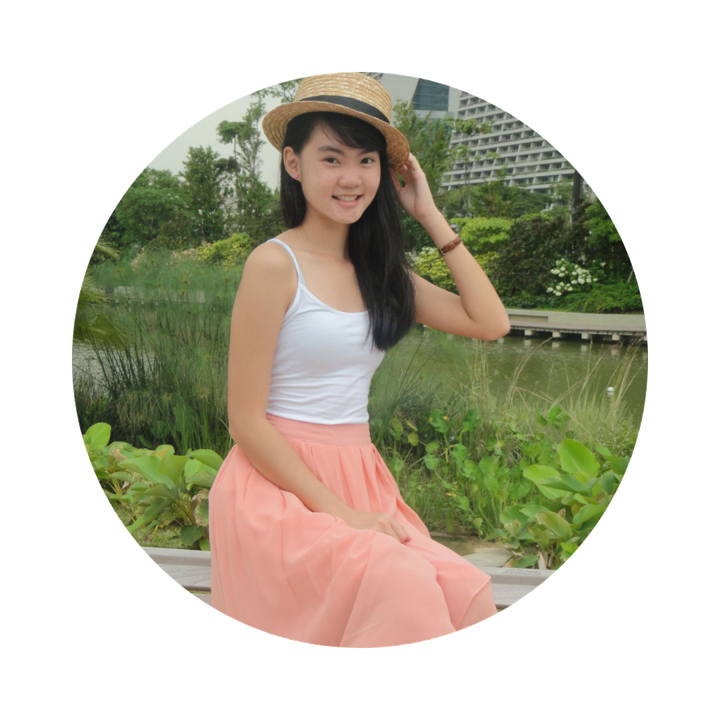Reflections from an experiment in community building for changemakers in Singapore
By Anthea Ong and Vincent Ng
The spirit of helping one another as a community has played a key role throughout Singapore’s history in creating an inclusive society.
From government-led endeavours such as Community Centres, Community Development Councils and Residents Committees to informal efforts like clan associations, religious groups and ground-up initiatives, there is certainly no lack of community building in Singapore.
Yet before we “build” even more communities, perhaps there is value to pause and ponder over a question that seems almost too obvious to ask: when we say we want to build communities, what exactly are we trying to build?
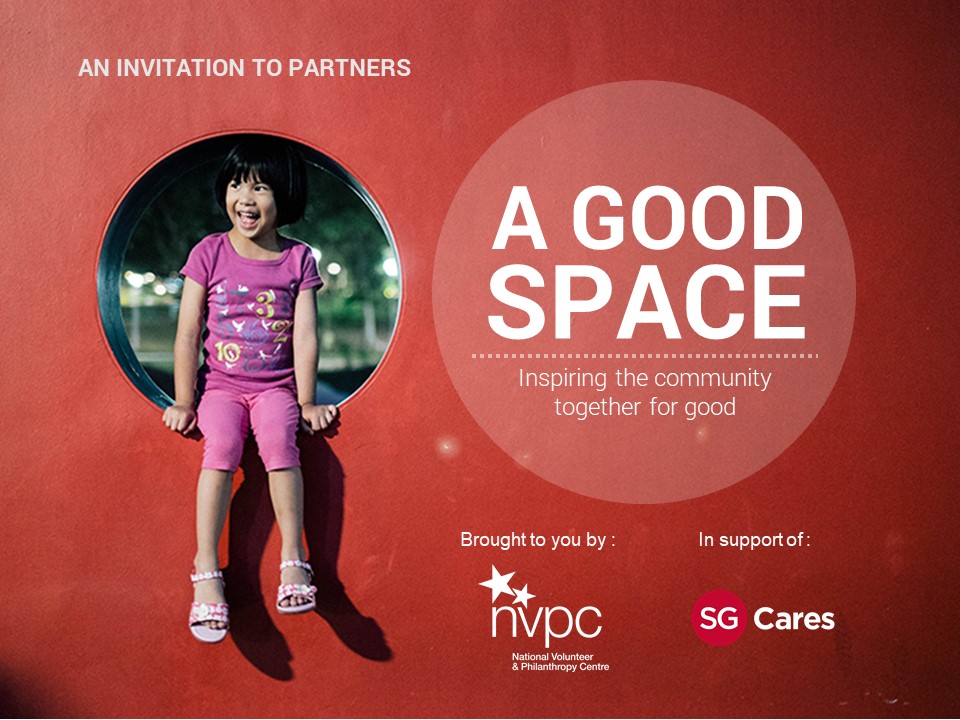
After observing many inspiring social changemakers working in silos, struggling with a lack of resources and feeling burnt out, with Melissa Kwee from the National Volunteer and Philanthropy Centre (NVPC), we started A Good Space (AGS) in July 2017 with a small group of fellow active citizens bearing a simple intention in heart:
What if we could build a community of changemakers across a diverse range of social issues sharing ideas, resources and supporting each other? To ignite this, we sought support from friends and have built a nest at NVPC.
Although we started by gathering a small group of changemakers from our personal networks, we began not with the answer but as equally curious citizens.
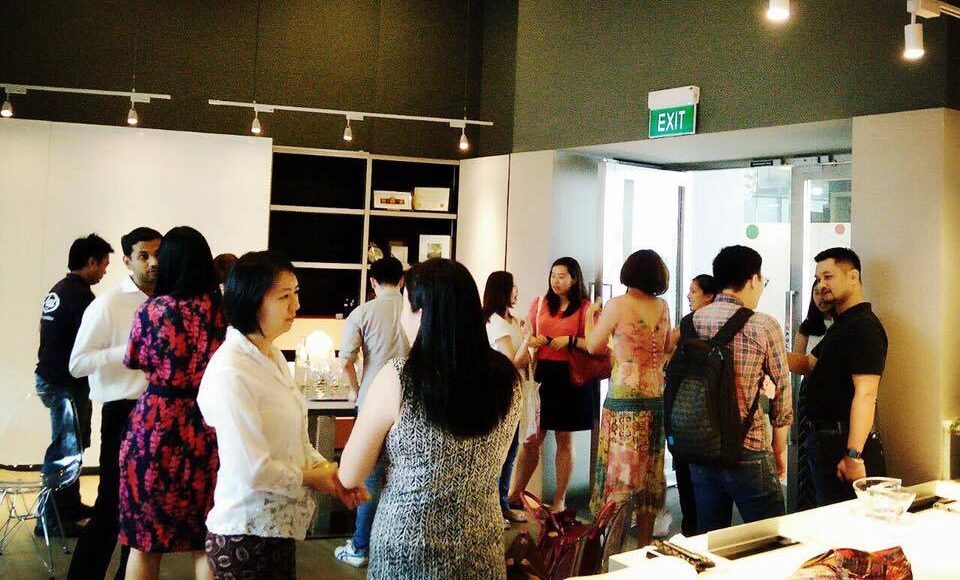
With this beginner’s mind, we invited others to explore this social experiment with a vision of creating a community of community builders that would engage citizens in innovative and immersive ways.
Almost two years in, we thought it might be helpful to share our journey and the insights gleaned on how we can intentionally create meaningful communities.
Hopefully this will encourage more discussion on community building and with that, more active citizens can be inspired to come forward to drive the change they wish to see.
Beyond Space and Relationships
One of the first challenges that changemakers face is finding affordable and accessible physical space for their activities. This is validated by a SUTD-NVPC study on Groundups which listed space as one of the biggest practical constraints.
Yet we all know of so many gorgeous rooms in centrally located corporate offices and public institutions that are left unused on weekday evenings and weekends. There was trapped value all around and we wanted to unleash it.
Starting with the very central NVPC and later with the likes of Johnson & Johnson and SingPost, AGS partnered Companies of Good to curate such spaces to offer for use to our changemakers.
These under-utilised spaces are then enlivened with civic programming that bursts forth from the collaborative and innovative activities of the changemakers. We call these individuals Good Starters.
With this incentive of space, we also established a very clear curatorial intent from the onset. To be a Good Starter, a changemaker must demonstrate innovation, openness to collaborate with others (especially those who are different) and the project/programme/events must be open to the public.
This means we do not seek out or support single-issue advocacy groups unless they are willing to move towards the centre and be open to listening and engaging the ‘other’ with an open heart and open mind.
We observed too many unproductive echo chambers and believe that society is deeply enriched when we suspend judgment, explore and appreciate the humanity of others and what we have in common without the need to prove our point or feel pressure to conform or be converted.
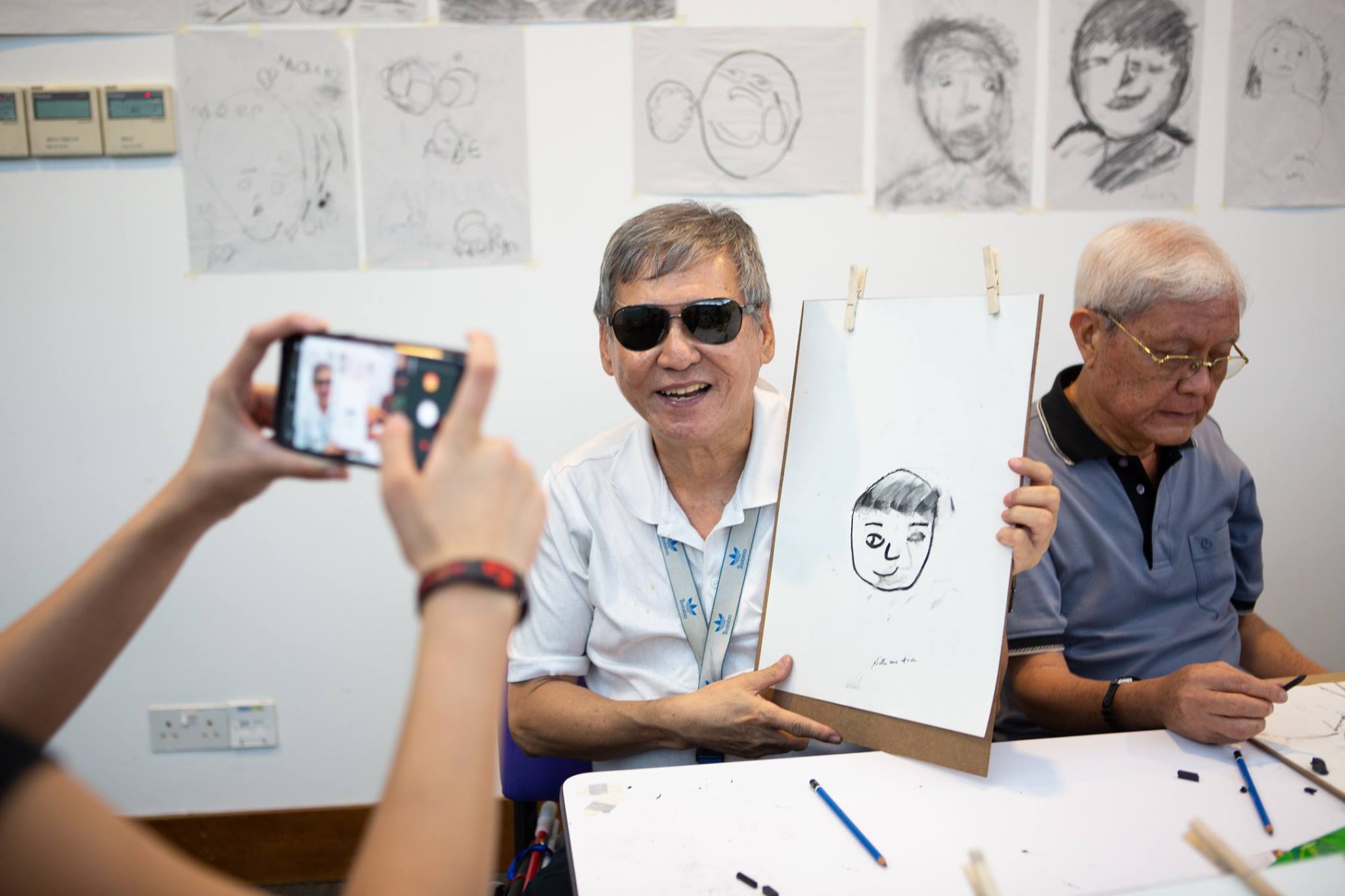
With this clarity of intent, we approached various individuals and groups; ground-ups, social enterprises or non-profit organisations that we knew and quite wonderfully, new ordinary citizens at different stages of change-making also started to come forward.
This group included Alecia Neo who showcases the talents of the differently-abled through drawing workshops conducted by a partially blind teacher; Eleanor Yap who organises Makan with Seniors to bring youths and seniors for deep conversations over a meal; and Porsche Poh of Silver Ribbon who supports persons in recovery from mental health issues through laughter yoga and talks in dialect.
As at mid-March 2019, 71 Good Starters had organised a combined total of 236 events attended by 5,665 people across at least 12 social issues. This average of 11 events per month far exceeded our initial target of 4 events per month!
With the first challenge of physical space out of the way for them, the growing number of Good Starters and event attendees (we call them Good Souls) at AGS also provided a common mailing list and Facebook community for our changemakers, new and old, to have access to participants.
We also wanted AGS to be an emotional space for Good Starters to form friendships with each other so we started organising social activities for the quarterly “huddles” where our changemakers come together to just chat, recharge and bond.
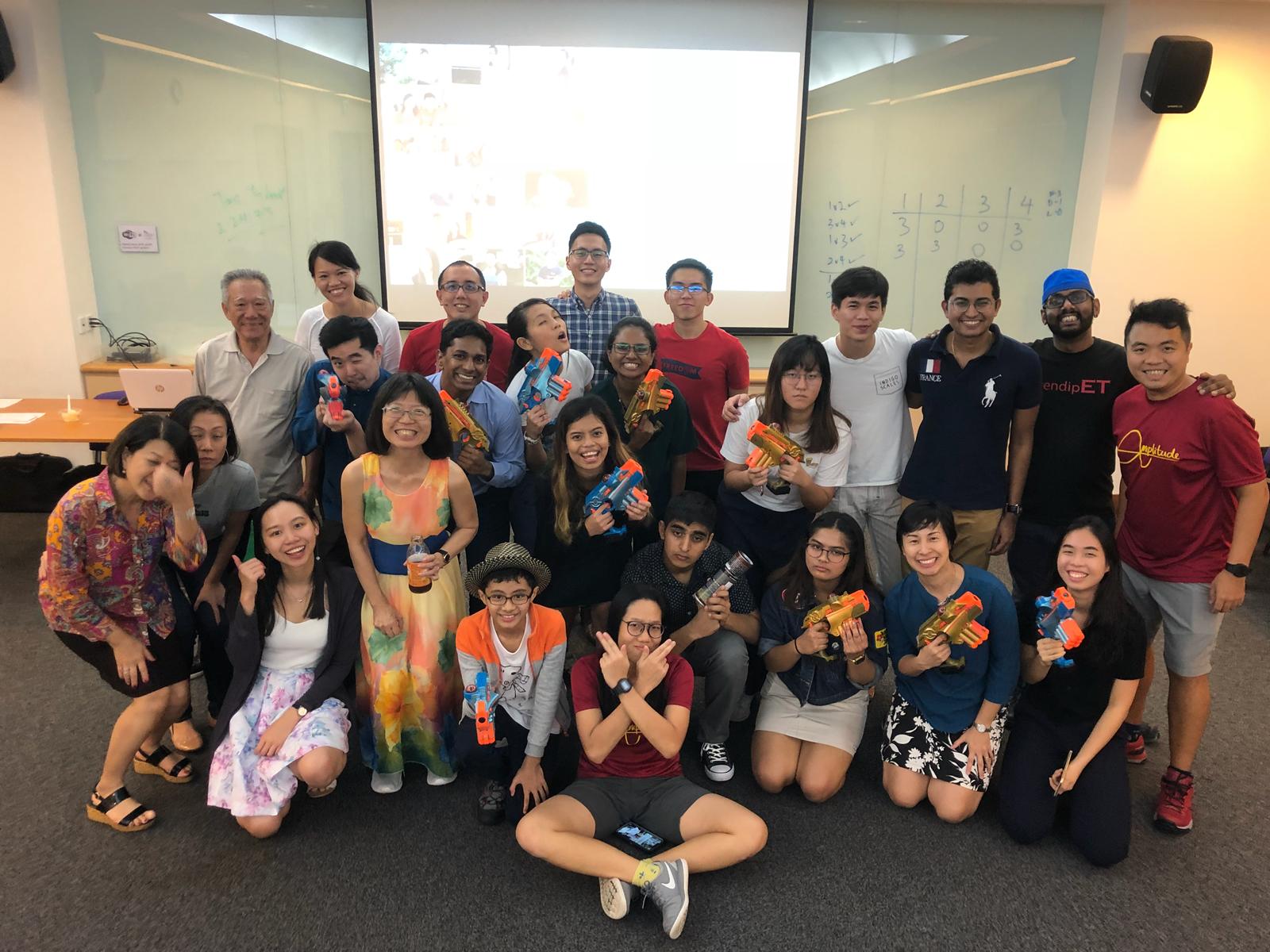
While there was certainly a flurry of activity, something felt amiss. Very little of the sharing or collaborative behaviours we had hoped to see amongst our changemakers were observed.
We think most Good Starters saw us then as merely a provider of functional resources e.g. free space and publicity.
Even though there was a curatorial therefore selection process for them to become a Good Starter, they did not perhaps identify with AGS as a community of changemakers they were a member of and can contribute to.
In our eagerness to support them, we had unknowingly created a relationship of dependency in place of ownership.
At that point, we realised that if we were to build a community of changemakers (who are also community builders themselves), we must do more than just gather people, provide functional resources and be satisfied with a large number of events.
We started asking: what moves a group of people that owns the community and not merely consume services. Anthea would always ask Vincent:
"Are we playing the role of a concierge or a curator / facilitator?"
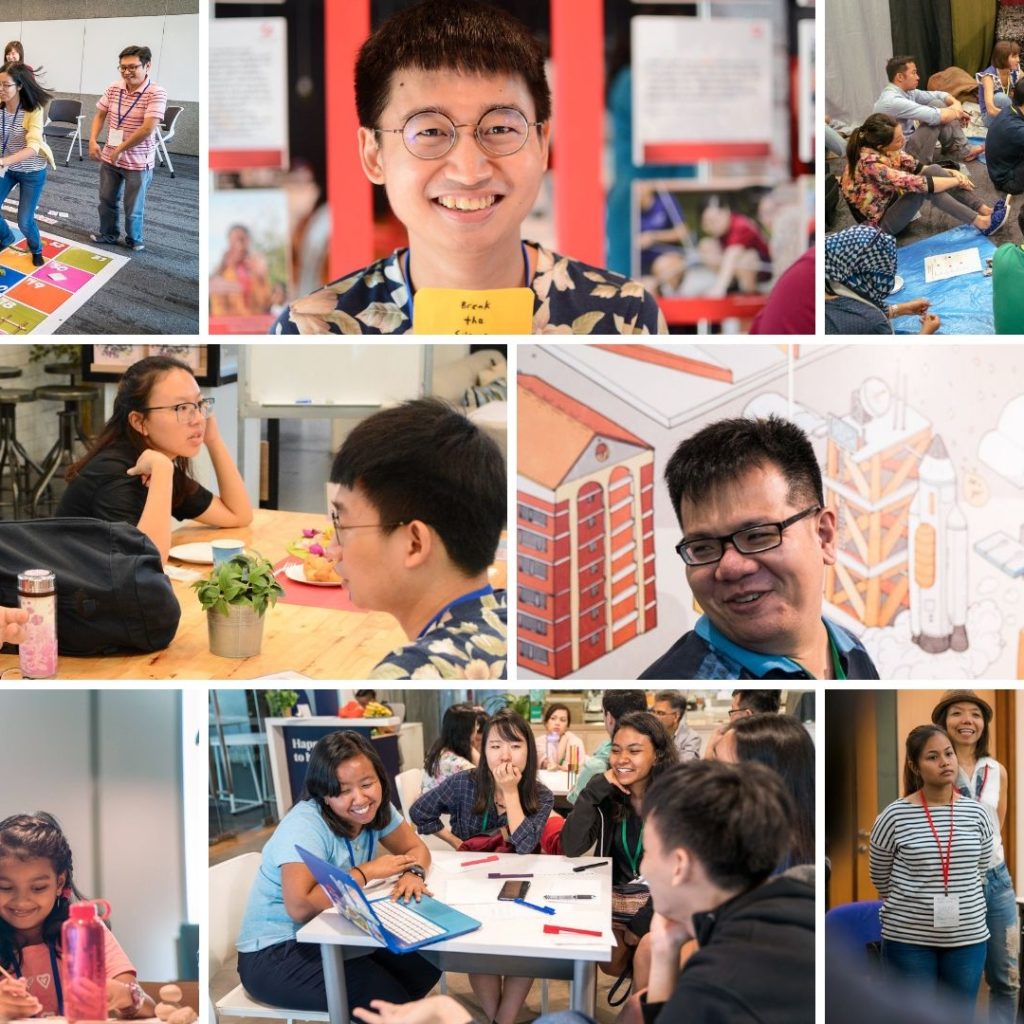
Build Capacity For Meaningful Participation
Although we had encouraged them to participate in the community and collaborate with each other, we had not intentionally offered them clear, and meaningful opportunities to contribute and shape the community or the common vision.
So we decided to organise our first A Good Day in June 2018 as a platform for Good Starters to cross collaborate. For example, University of the Third Age and Silver Ribbon came together to co-create a life-size ‘snakes and ladders’ board game that makes participants ask questions about ageing and mental health.
Standby Collective and Be Kind SG came together to combine their causes of sexual harassment and micro-volunteering respectively too. Junior Art Lab and Vaangae Anna collaborated to explore the theme of home with migrant workers through creating art using Microsoft Powerpoint.
We also started learning from our own changemakers: what do they do to make members of their communities own and thrive?
Acting Up Singapore, a social enterprise providing therapeutic services to youths-at-risk through multi-modal programmes, builds their youth community by creating opportunities for their members to create, produce and manage a public performance to showcase their stories and advocate for youth mental health.
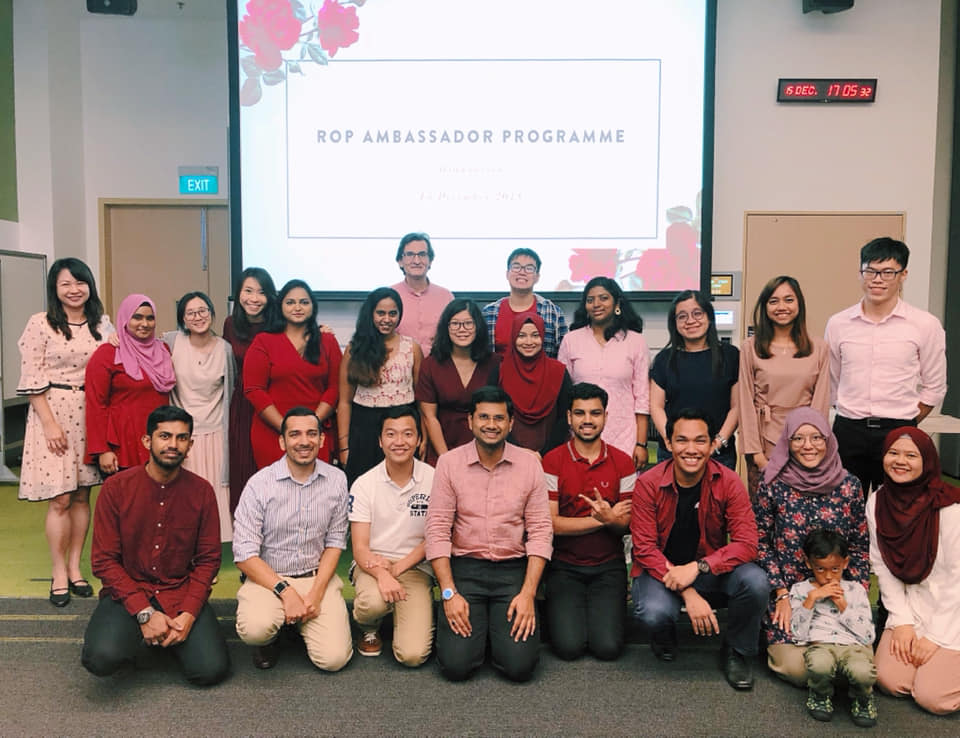
Other Good Starters build the capacity of their members to enable them to participate more meaningfully. Roses of Peace (ROP), another youth-driven initiative to promote a culture of interfaith appreciation, developed a one year program to equip youth leaders building bridges between faith communities with the skills to do so.
These Peace Ambassadors then go on to organise projects with each other to promote interfaith peace and racial harmony, creating a self-organising community of ambassadors furthering ROP’s message of building peace.
Climate Conversations, a small group discussion community of people concerned with climate change, created opportunities for their members to either volunteer at future discussions or equip them with skills to be a facilitator hosting discussions for their friends and family.
Perhaps, it is in meaningful participation that people feel a sense of belonging and ownership of a community.
So we started making some small changes. First, we reduced our changemakers’ dependency on us as the central point of help by creating a closed Facebook Group where they could ask and offer help to each other.
Second, we encouraged Good Starters to endorse AGS by recommending other changemakers they know to join the community so they become active players in growing the community.
Third, we organised Idea Jams where they could brainstorm with each other and co-create a combined new and innovative activity to engage the public in their different causes.
Direct Towards a Shared Purpose
Perhaps what really unifies a group of people as a community is that they pursue a shared purpose, one that they care about and are committed to taking action towards.
This gives the reason for a community to exist. While meaningful participation helps members to ask: “Who am I in this community?”, developing a shared purpose gets them to ask: “Who are we as a community? Where do we want to go?”
The community builder’s role is to facilitate the development of this shared purpose amongst a group of people who are like-minded but were not connected before the formation of the community.
Social issues are complex and interconnected. Our particular challenge was to help Good Starters doing good work across various social issues to step out of their individual causes and silos and uncover what their shared purpose could be.
In doing so, perhaps we can help them see that although we come from different initiatives, we are actually all on the same team.
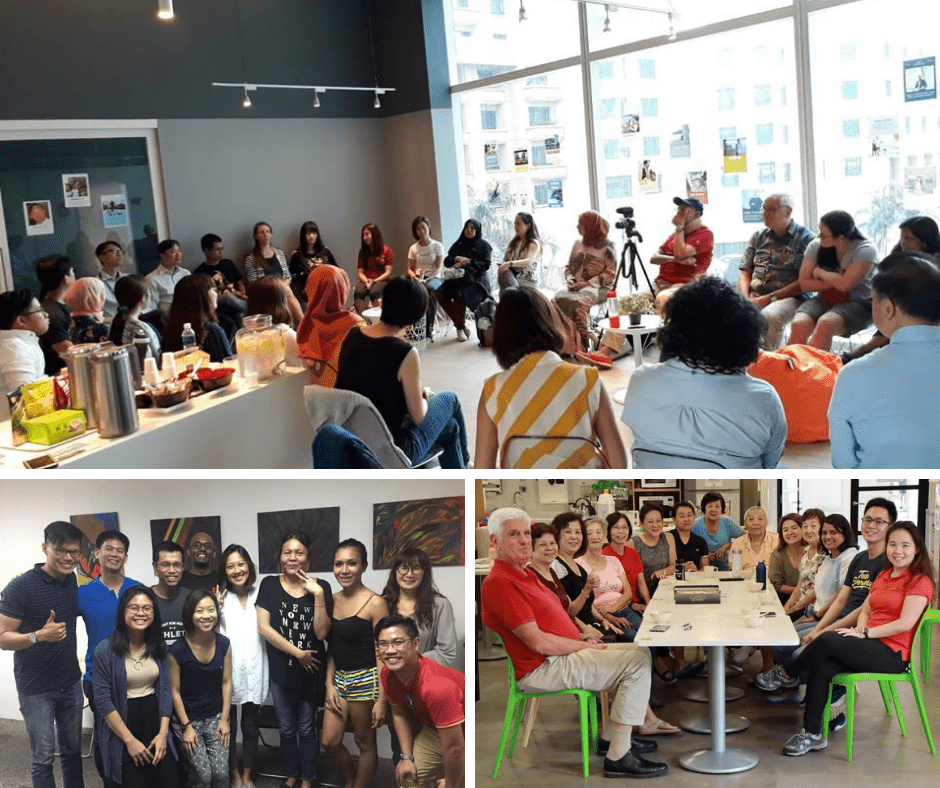
Along with Gerard Ee of Beyond Social Services and Dr Jean Louis-Lamboray of Belgian non-profit The Constellation, we kicked off a dream-building experiment called A Good Conversation last November.
We gathered 31 diverse changemakers (a number were Good Starters) to ponder over the question: what is the Singapore of our dreams that we cannot create alone? Over 2 intense full weekend sessions in November 2018 and February 2019, we co-created a shared dream for Singapore and action steps and practices we pledged to get us there.
By design, we wanted the changemakers to be immersed in and learn from communities that are self-organising based on their strengths and appreciation, and not merely relying on institutional resources to solve their problems.
Perspectives and biases were challenged, and new insights gained from the visits to communities such as the Wellness Kampung in Yishun, a senior-led activity centre for seniors and Project X, a community to support sex workers by sex workers.
While the outcomes of A Good Conversation remains to be seen, we are hoping to facilitate more of such sessions. We shall be doing one for Good Starters to have them co-create and own their dream for AGS. We hope that the community will gain strength by collectively deciding what they stand for and together, plant the seeds for the deepening of a shared identity.
Maybe we would then come closer to being a community run by Good Starters, for Good Starters.
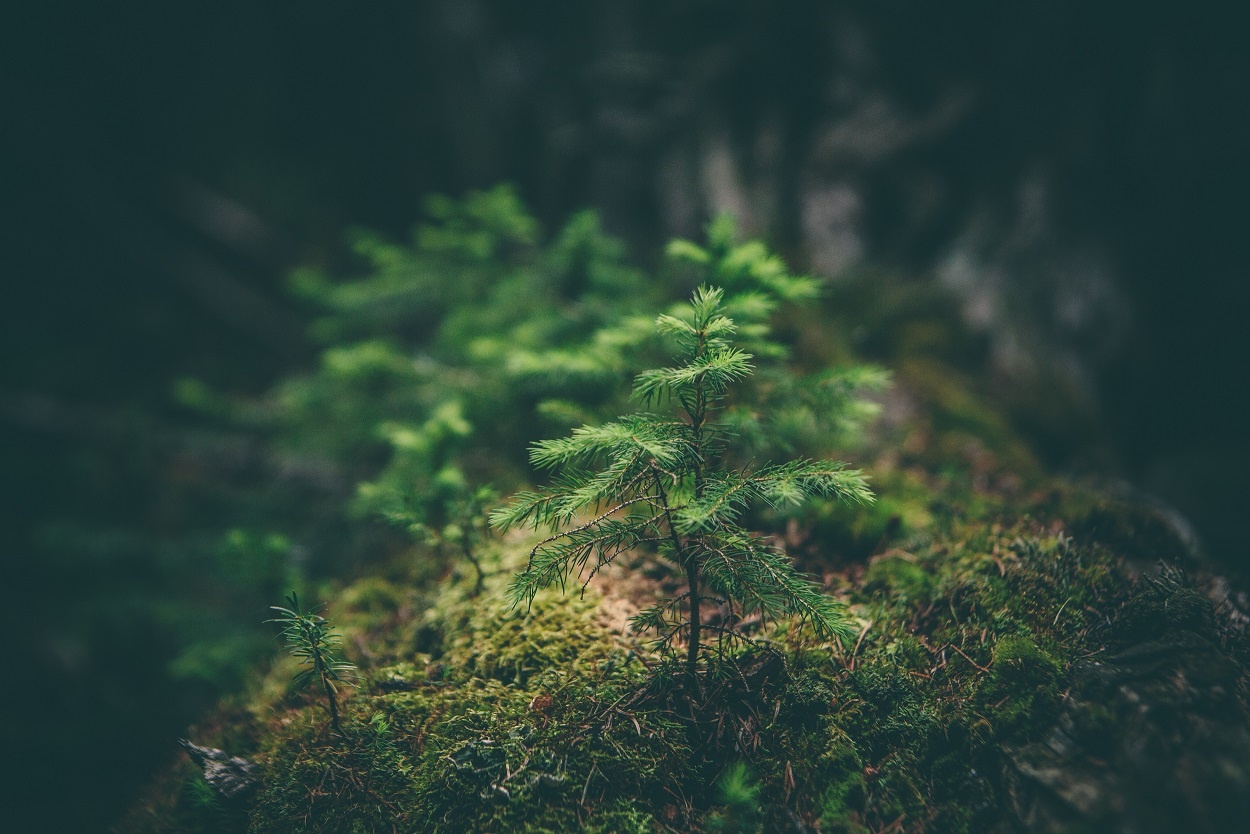
Community Building is an Adaptive Process
Throughout our journey, we learnt that committing to community building means being comfortable with the uncomfortable – ambiguous and uncertain outcomes. Someone once put it so beautifully – community building is like planting a forest. One can’t plant a forest immediately. Instead, one has to plant the seeds for the tree, safeguard it and wait for it to grow – one tree at a time.
Community building is messy and cannot be rushed. Impatience and control destroy communities. The community builder’s role is to create a space for members to take ownership, not to impose ownership on them.
Some members will participate more actively than others and some will decide not to participate at all. While we can keep inviting members to participate, we need to trust that whoever comes are the right people. Moreover, we must also accept that change happens at the speed of trust.
Conclusion
When we say community building, what exactly are we trying to build? We know it is more than a gathering of people at a physical location like a Resident’s Committee or an underutilised office space.
It is also not just about providing social activities for a plethora of interest groups. It is about:
- Building human to human social relationships with an open mind and heart where we can release judgments and just appreciate one another as mothers, fathers, daughters and sons, neighbours and friends;
- Fostering a sense of ownership and belonging where members within a community have opportunities and the capacity to act with and for one another’s good; and
- Shaping this capacity towards a shared goal or purpose
In our haste to ‘scale’ community building by creating more infrastructure, building more communities and having more events, we might wish to step back and ask: how can we use the same resources to deepen existing communities instead?
So perhaps, the biggest lesson from our journey in building a community of changemakers in Singapore at A Good Space is: more questions, more curiosity, more humility.
Like a forest is formed of growing trees, a community is a living collective of humans with dreams and challenges, many questions, some answers but a common quest to keep asking and seeking the betterment of the common good.
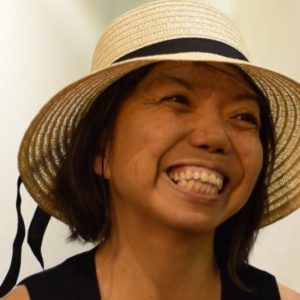
Anthea Ong
Since 2009, Anthea has founded several community projects, including Project-Yoga-on-Wheels, Playground of Joy and Circle of Bliss. She is the founder of Hush TeaBar (Singapore’s first silent teabar to bring silence and awareness to the workplace, facilitated by hearing-impaired employees) and also a former Nominated Member of Parliament in Singapore.
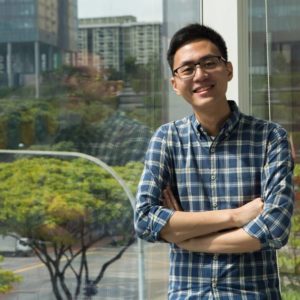
Vincent Ng
Vincent cares deeply about the issue of youth mental health and has cultivated a passion for education and contributing to positive social change.
